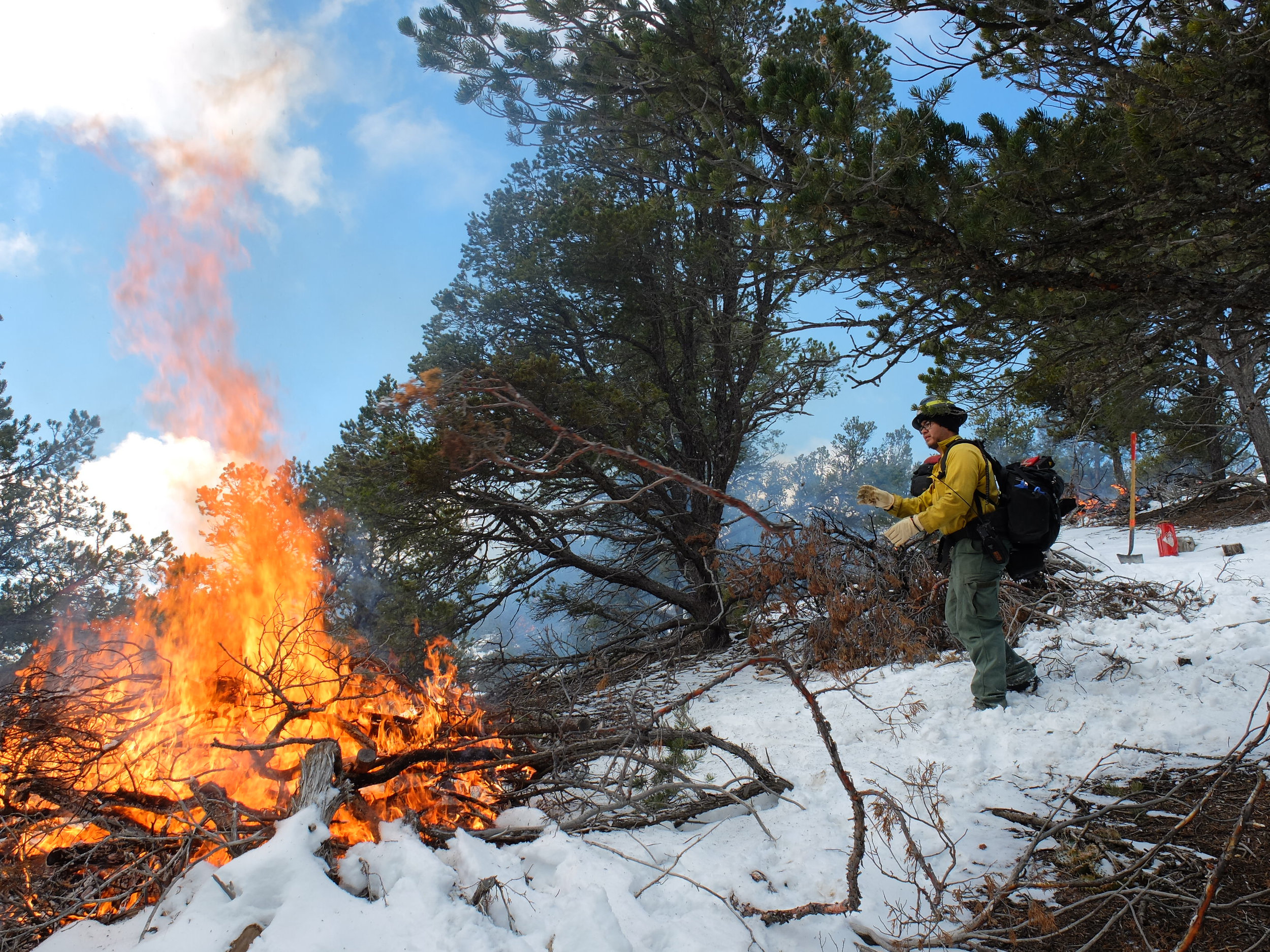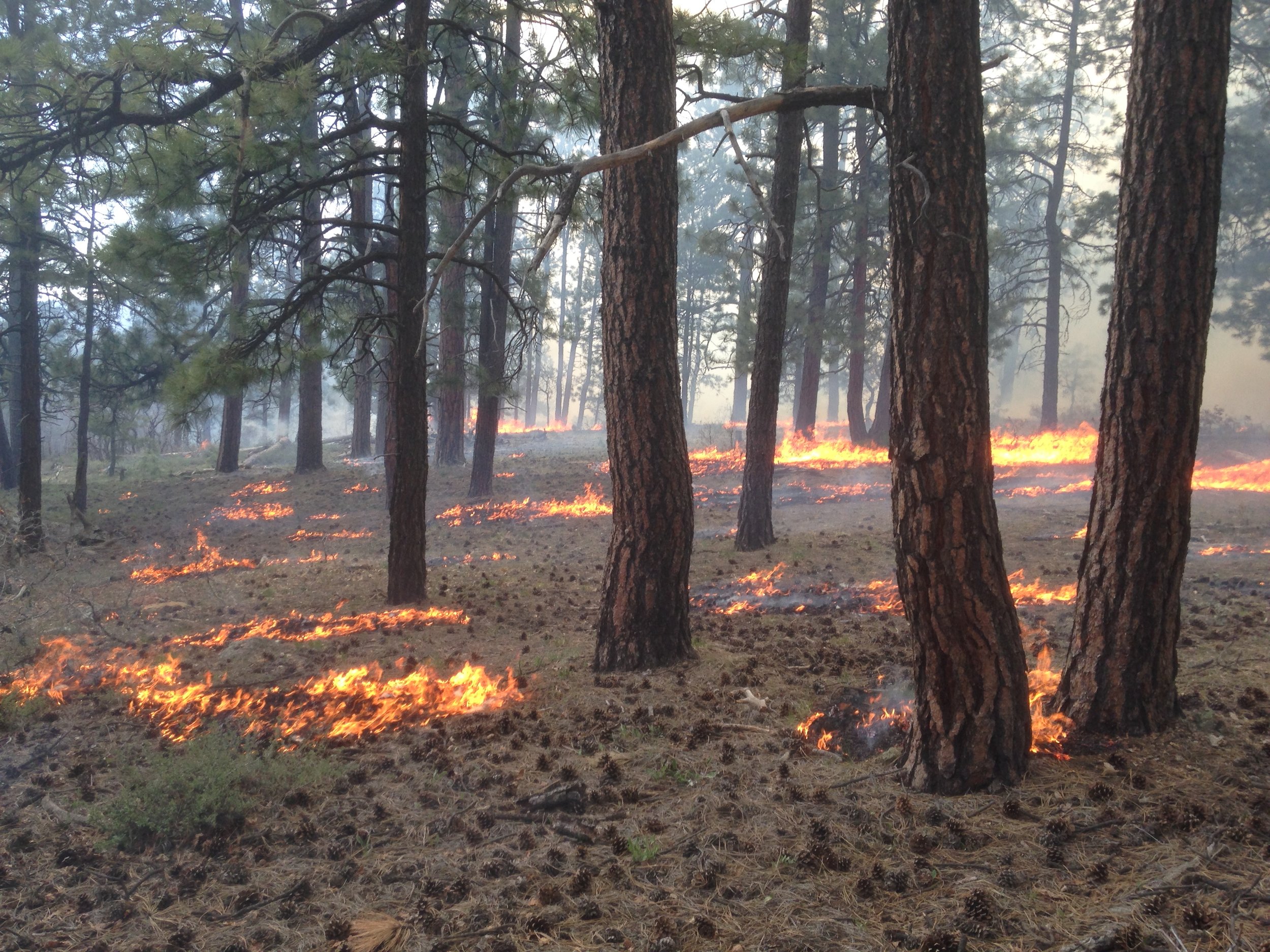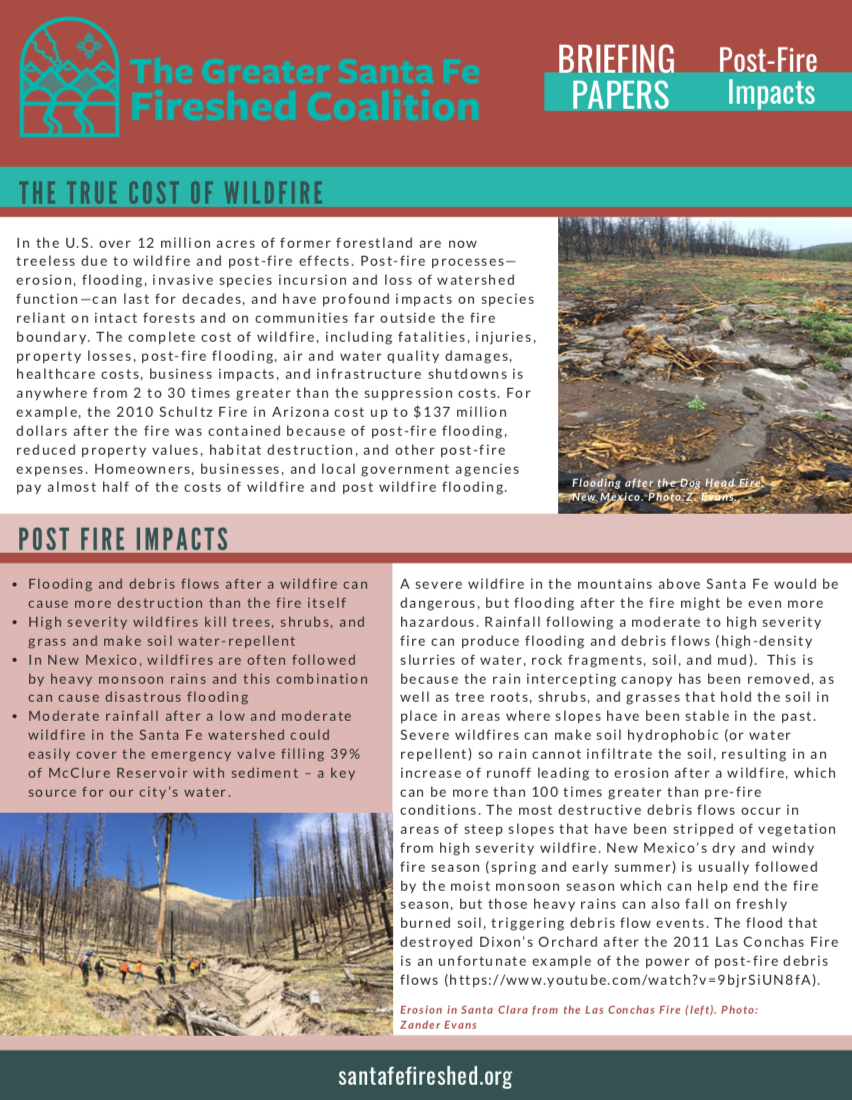Santa Fe Watershed Prescribed Burn Planned for Mid-March to Restore Forest Health, Reduce Risk of Wildfire
SANTA FE, NM – March 5, 2019 – For Immediate Release. Fire managers on the Santa Fe National Forest (SFNF) plan to take advantage of favorable conditions, including fuel moisture levels, air quality, wind direction and weather forecasts, to initiate a prescribed burn in the Santa Fe Municipal Watershed on the Española Ranger District as early as Monday, March 18, 2019. Exact dates will be dependent on fuel conditions on site.
Up to 500 acres near Nichols Reservoir in the lower Watershed, including 50 acres of piles, will be treated with hand and aerial ignitions. Fire managers are also looking at the possibility of treating a 750-acre block in the upper Watershed within the Pecos Wilderness.
The City of Santa Fe’s Municipal Watershed Plan 2010-2029 recommends vegetation treatment in the Wilderness portion of the Watershed to reduce the risk of wildfire and its potential catastrophic impact on the city’s water supply wildfire. The upper Watershed was cleared for treatment under the National Environmental Policy Act (NEPA) in 2015.
If favorable conditions create an opportunity to conduct aerial ignitions this spring, potential targets in the Wilderness would be southern and western aspects of the steep terrain in the ponderosa pine forest, using snow on the ground as a buffer.
The Santa Fe Watershed prescribed burn is specifically designed to improve and protect the 17,384-acre Municipal Watershed, which provides 40 percent of the water for the City of Santa Fe, by removing dead forest fuels and reducing the risk of high-intensity wildfire. Prescribed fire is always managed with firefighter and public safety as the first priority.
Due to the Watershed’s proximity to the city and terrain that tends to direct smoke toward Santa Fe, prescribed burns within its boundaries may impact populated areas. The SFNF works closely with the New Mexico Environment Department (NMED) and the New Mexico Department of Health (NMDOH) to monitor air quality during a planned ignition and limit the severity of smoke impacts.
Smoke will likely be visible from Santa Fe, Tesuque, Glorieta, Pecos Canyon, El Dorado and I-25. Smoke may settle into lower elevations and drainages overnight but should lift by midmorning. Lingering smoke may be present for up to one week after ignitions are complete.
Information on air quality and protecting your health by using the 5-3-1 visibility method can be found online at the New Mexico Department of Health’s website at https://nmtracking.org/fire.
Santa Fe National Forest
11 Forest Lane Santa Fe, NM 87508
Voice: 505.438.5300
Twitter: @SantafeNF
Facebook: www.facebook.com/santafeNF
News Release
Media Contact: Julie Anne Overton Acting Public Affairs Officer
505.438.5320
julieanneoverton@fs.fed.us
For information on the HEPA filter loan program, go to
https://www.santafefireshed.org/hepa-filter-loan-program/.
Fire updates are posted on the New Mexico Fire Information website at www.nmfireinfo.com, www.facebook.com/SantaFeNF and Twitter @SantafeNF.
For more information, contact the Española Ranger Station at (505) 753-7331.
###
USDA is an equal opportunity provider, employer and lender.






